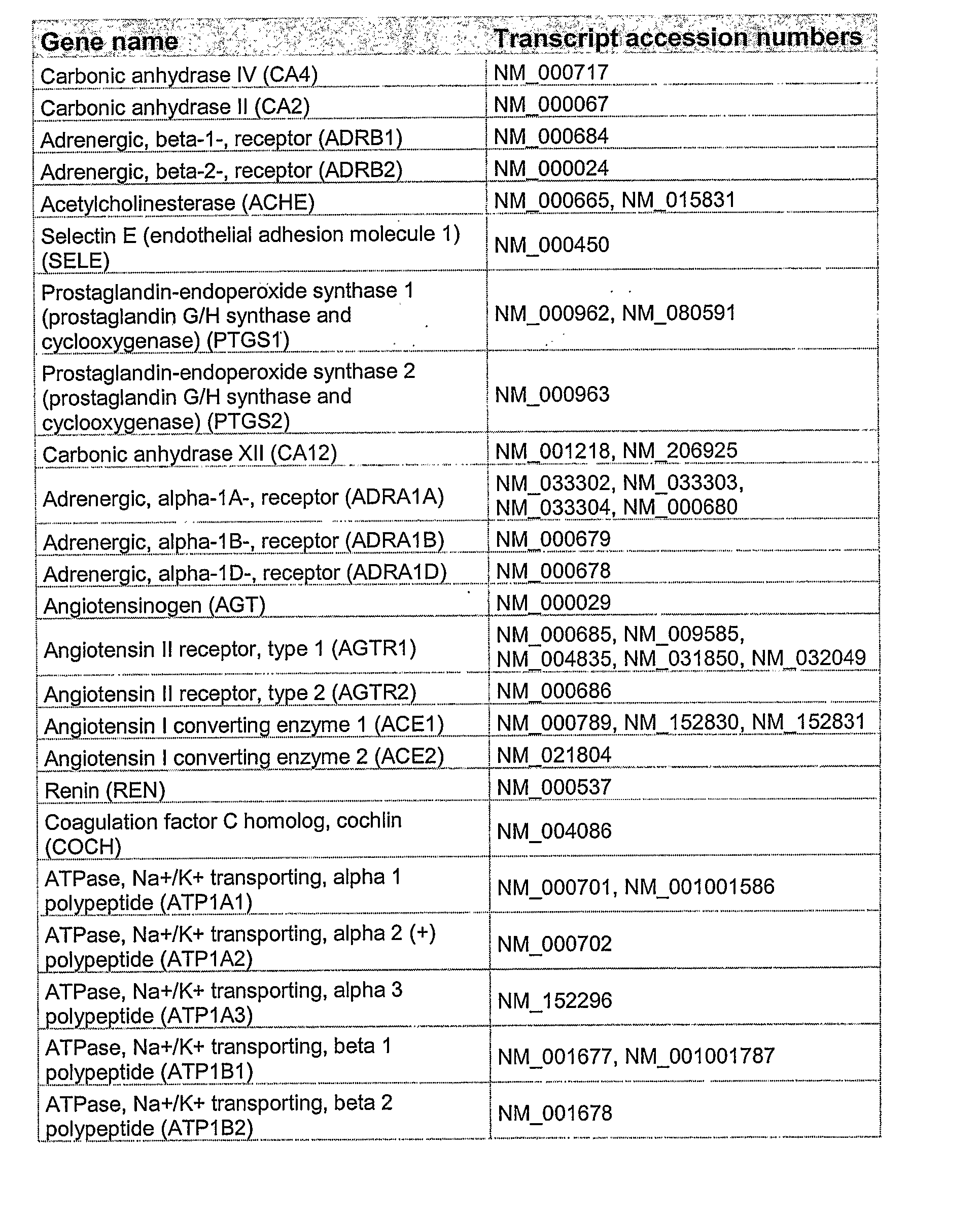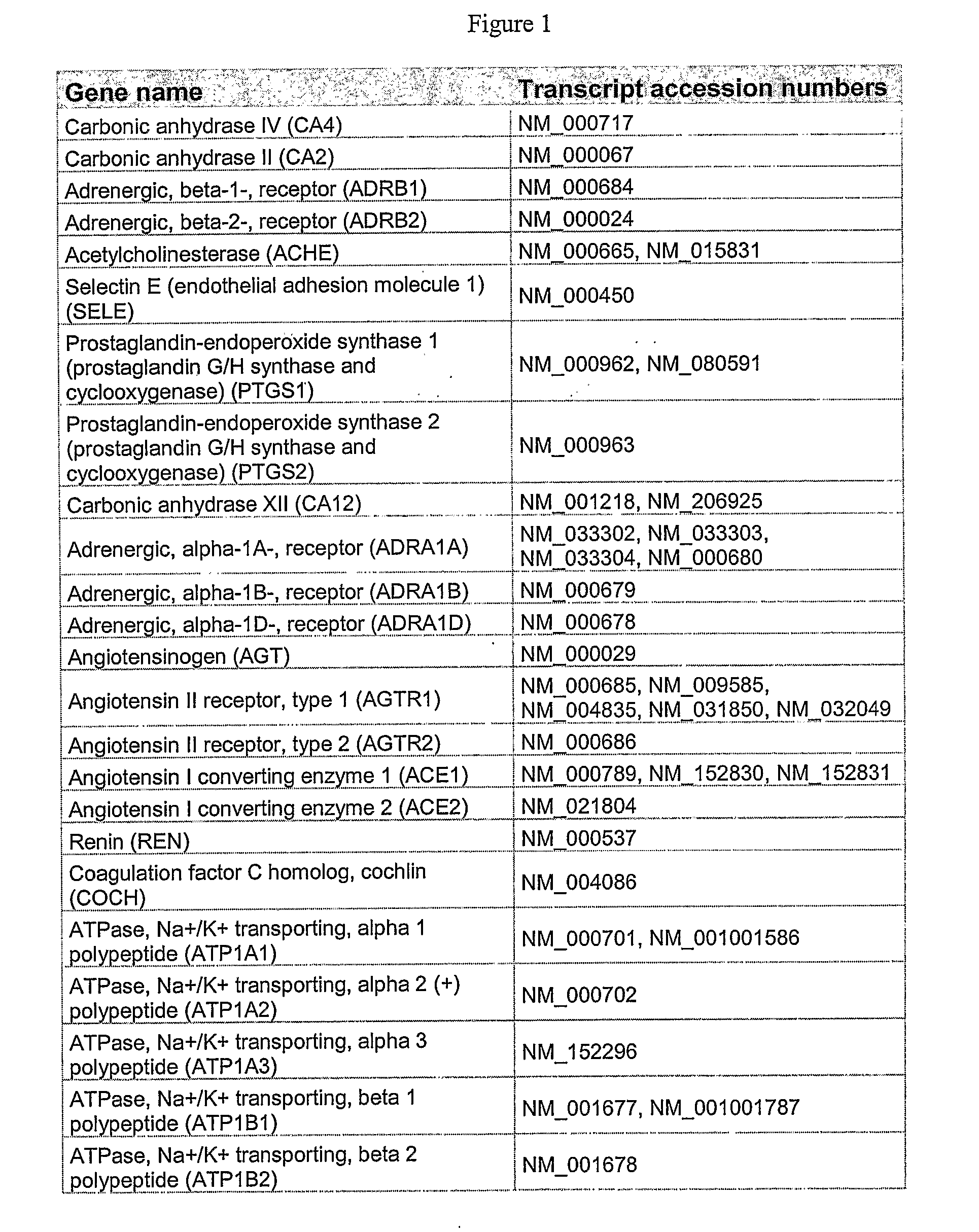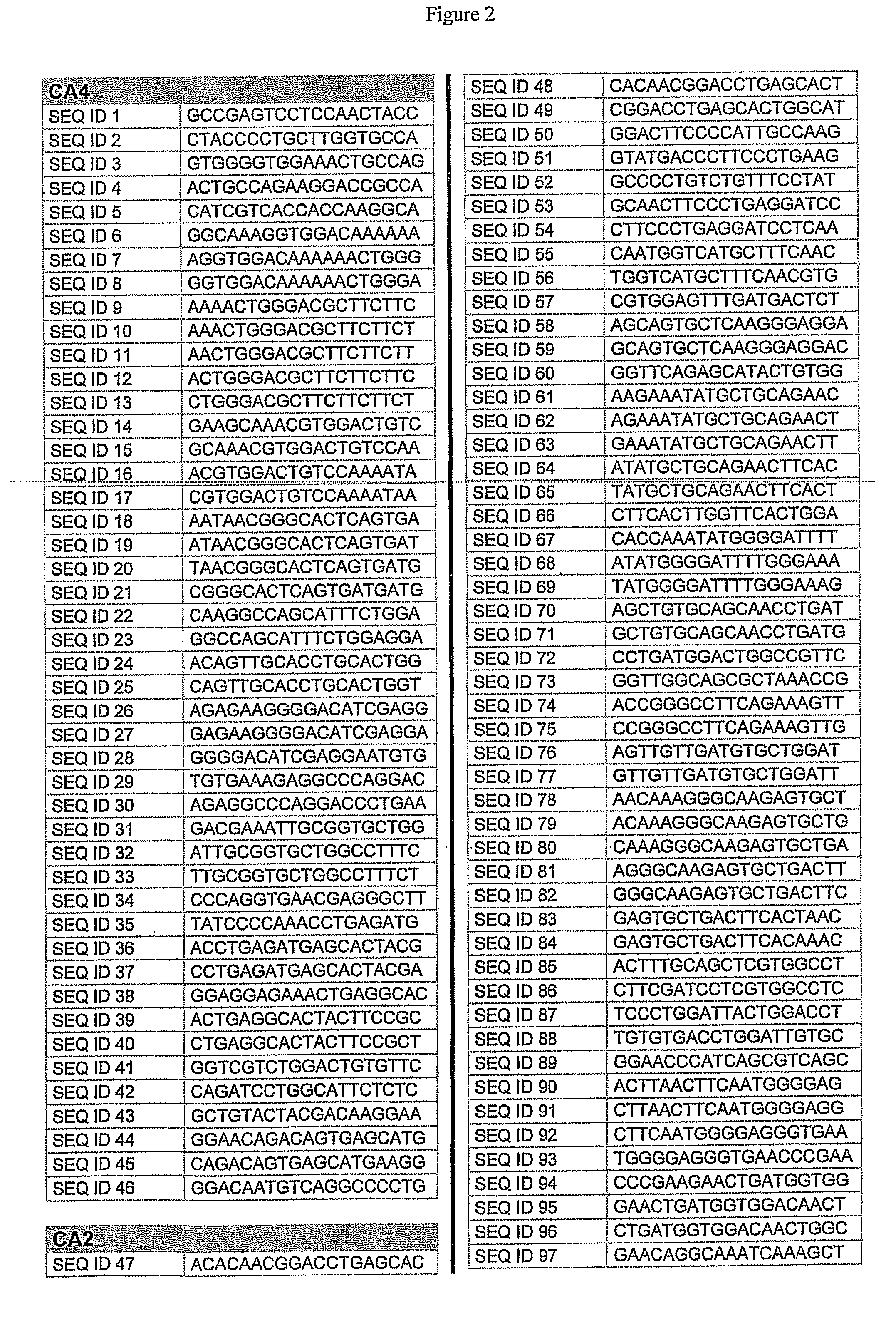Treatment of Eye Disorders Characterized by an Elevated Intraocular Pressure by siRNAs
a technology of intraocular pressure and eye disorders, applied in the field of methods, can solve the problems of difficult universal application of technologies, difficult to predict desired effects, and cost and time-consuming process
- Summary
- Abstract
- Description
- Claims
- Application Information
AI Technical Summary
Benefits of technology
Problems solved by technology
Method used
Image
Examples
example 1
In vitro Assays
[0130] To determine the inhibition of the different targets involved in glaucoma using RNAi technology, the first step was to perform experiments in cell cultures. For each target, several siRNAs were designed using a specific software according to the rules described before. Those with the best characteristics were selected to be tested. The siRNAs were applied to cell cultures, such as NPE, OMDC and HEK293. The effect of siRNAs over the target gene was analyzed by real time PCR and semi-quantitative PCR according to standard protocols. The gene target transcript levels were normalized using actin as housekeeping gene. Table I below shows representative results of real time PCR experiments for some of the target genes described previously. The values represent the mean of the percentage of siRNA interference over each gene expression once normalized with the control cells and their standard deviations. Compared to the control cells, the level of the different transc...
example 2
In vivo Assays
[0150] Previously to the siRNA therapeutical application, the in vivo assays were validated to determine the proper siRNA delivery.
[0151] Those siRNAs selected by the in vitro assays were applied to the animal model, following the protocol previously described. To avoid the effect of IOP fluctuations due to circadian cycles, all the applications were performed at the same time. To determine the siRNA effect, intraocular pressures (IOPs) were measured as previously mentioned.
[0152] Since glaucoma pathology presents an increase in the intraocular pressure, the aim was to obtain a decrease in its levels following siRNA application.
[0153] Most of the results for the different targets showed a significant decrease in IOP levels comparing with controls and also with commercial drugs (Latanoprost and Dorzolamide) and the animals treated with vehicle alone (negative control) didn't present any significant change in their IOP baseline. The data are summarized in table II wh...
PUM
| Property | Measurement | Unit |
|---|---|---|
| volume | aaaaa | aaaaa |
| temperature | aaaaa | aaaaa |
| temperature | aaaaa | aaaaa |
Abstract
Description
Claims
Application Information
 Login to View More
Login to View More - R&D
- Intellectual Property
- Life Sciences
- Materials
- Tech Scout
- Unparalleled Data Quality
- Higher Quality Content
- 60% Fewer Hallucinations
Browse by: Latest US Patents, China's latest patents, Technical Efficacy Thesaurus, Application Domain, Technology Topic, Popular Technical Reports.
© 2025 PatSnap. All rights reserved.Legal|Privacy policy|Modern Slavery Act Transparency Statement|Sitemap|About US| Contact US: help@patsnap.com



